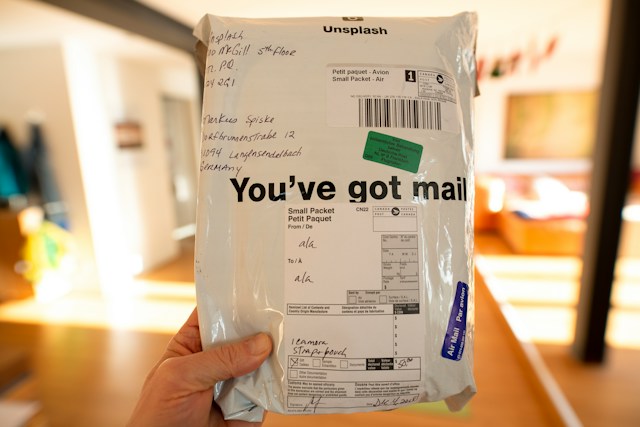Order tracking is a key part of the customer experience for any e-commerce business. It is a way for customers to know where their order is and when it will arrive. It is also a way for businesses to keep track of their orders and make sure they are delivered on time. In this article, we will discuss some emerging solutions in order tracking software that can help improve customer satisfaction and increase sales.
1. Multiple Carrier Support
Some time ago, all the order tracking software was limited to a single origin carrier and a single destination carrier. This meant that a customer could see the tracking information from two carriers at maximum. This was suboptimal since it’s common for a package to be handled by multiple carriers, especially when shipped internationally. So, even if the customer could see the overall tracking information and even if the package was delivered on time, this could’ve caused big gaps in the tracking information, leading to customer dissatisfaction.
And there can be an even worse situation. It’s also common for a package to be assigned a different tracking number by a transit carrier. This happens especially often if the package has to travel a long distance, for example, if you order something from a Chinese online store like Shein and you live in the US. In this case, the package would be handled by a Chinese carrier first, then by a transit carrier (usually in Europe), and then by a US carrier.

This makes it impossible to track the package with the destination carrier using the original tracking number. And since the older solutions didn’t support multiple carriers, the customer would’ve seen the package stuck in transit, making it impossible to know the real status of the package: is it still on the way or has it been lost, or maybe there are some customs issues; or even if everything is fine, the customer would’ve been left in the dark, not knowing when to expect the delivery. Obviously, Shein tracking is not the only example of this problem. The same applies to any other online store that ships internationally.
But lately, the order tracking software has evolved, and now it’s possible to track a package with multiple carriers in one place with a single request. This means that the customer can see the tracking information from all the carriers that have handled the package, which is a big improvement. It’s also possible to track a package with multiple carriers using a single tracking number, which is even better; the transit tracking numbers, if present, would be picked up and processed behind the scenes, providing a smooth customer experience.
Read more: Trends likely to shape Box and Packaging
2. Improved Carrier Auto-Detection
Carrier auto-detection is not a new feature by itself, but the older solutions had an unpleasant issue with them. This feature is based on the tracking number format, which differs for each carrier. However, some formats are used by multiple carriers, which makes it impossible to tell for sure which carrier the package belongs to. The older solutions would’ve just shown the list of carriers that support the tracking number format, which is not ideal since the customer doesn’t always know which carrier handles the package.
This is especially true for Chinese carriers since there are a huge number of them, and some of them use the same tracking number format. So if the customer doesn’t know which exact carrier handles the package, the only thing left to do is to try each carrier one by one, which is not a good experience since each request takes some time to process, and if the list of possible carriers is big enough, it can take a while.
So, how do the newer solutions tackle this issue?
They use the tracking number format as a first step, but if multiple carriers support it, they try all of them at once. Whichever one responds with the tracking information is the one that handles the package. You may think that this would be too slow, but it’s not since, under the hood, the carriers are queried in parallel, which makes the whole process basically as fast as querying a single carrier. This, of course, increases the load on the server running the software, but it’s a great competitive advantage. Also, the discovered carrier is cached for future requests, so the next time the customer queries the tracking information, the carrier is already known, which makes it unnecessary to query all the carriers again.
3. Quality Tracking Information Translation
The tracking information is usually provided in the language of the carrier, which is not always the language of the customer. So, the tracking information needs to be translated into the customer’s language, which is not a trivial task. Sure, there are machine translation services, but they are not always accurate, especially when it comes to tracking information, which is usually full of abbreviations and other technical terms. So, the older solutions would’ve just left the tracking information as is, which is not ideal since the customer would’ve had to translate it manually, which is not a good experience.
The newer approaches to this problem are more sophisticated. A lot of tracking statuses provided by the majority of carriers are actually the same simple line of text, which is something like “The package has been delivered” or “In transit”. So it’s easy to see that since this line repeats often, it can be translated once and then reused for future requests. Since such lines are usually short, hiring professional translators to translate them manually is not very expensive, and they are much more accurate than using machine translation services.

But there are also some tracking statuses that are more complex, which means that they can’t be translated once and then reused for future requests. For example, the statuses can contain a facility address or a delivery person’s name and phone number. The solution to this problem is to use a hybrid approach. The simple statuses are translated once and then reused for future requests, while the complex statuses are translated on the fly using machine translation services. This way, the customer gets the best of both worlds: the simple statuses are translated manually, which makes them very accurate, while the complex statuses are translated using machine translation services, which makes it possible to translate them in real-time. And since complex statuses are not very common, the overall quality of the translation of tracking information gets very high.
Conclusion
To provide the best possible customer experience, it’s important to use the best possible order-tracking software. The older solutions are still stable and widespread but lack some important features that can make a big difference. The newer ones are more sophisticated, and they grow quickly, increasing their market share. No surprise here since they provide a better customer experience, which can lead to increased sales and customer satisfaction.
